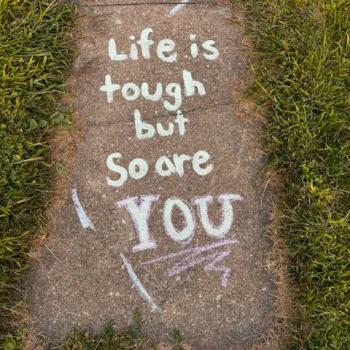This week, I want to look at the macronutrient carbohydrates. Again, like last week, carbs are not bad for you and are an essential part of the macro nutrient building platform for optimal health.
The primary role of carbohydrates is to fuel organ activity, particulalry the brain. Most people don’t realize this, the brain is often a very overlooked organ. When we villianize carbohydrates or make a blanket statement that carbohydrates are bad, we truly demonstrate how little we undestand about carbohydrate functioning.
In thinking more about carbs for brain health, we need to turn back to our discussion to protein. Proteins break down into glycogen, which can also be used for fuel by the brain, but not as efficiently as glucose. We can get glucose from carbs, they are broken down into monosaccharides, polysaccharides and disaccharides. Monosaccharides are the smallest parts of carbs and can found in three forms, glucose, fructose and galactose. Two monosaccharides make a disaccharide nd the most comon source of this in our human diet is sucrose or table sugar, lactose or milk sugar and maltose, a slow digesting sugar. Polysaccharides are the largest and most complex of the carbohydrates and can be found in the forms of fiber, starch and glycogen. As you can see, carbohydrates are much more complex than just eating bread and pasta. Because of this, whole cloth eliminating carbohydrates from the diet might reduce the brain‘s source of energy and affect brain function.
In thinking about carbohydrates in more educated manner, we must consider the sources. Generally, I stay away from processed carbs and my diet as you may have noticed at this point largely relies on protein and plants. I do eat a moderate amount of carbs on the weekend, especially if I am training. Poor quality carbohydrates will have a buzz word in the packaging, “enriched”. These processed foods will often have carbohydrates and calories, but at times are lacking quality micronutrients and fiber. Focusing your consumption on whole, unprocessed foods will have you find that your diet is higher in fiber, vitamins and energy. An added benefit to consuming real, whole carbs is the presence of indigestible dietary fiber and plant material that keeps the colon healthy.
It is recommended that adults get around 45-65% of daily calories from the carbohydrates they eat. There is a lot that I could write about in this piece, but keeping it short, let’s look at common American carbs and take a peak at alternatives.
Breakfast:
Cereal or some other grained carb – often loaded with sugar(carbs on carbs)
Orange juice – more carbs
Coffee with milk and sugar (more carbs).
If you eat this breakfast, more than likely you are going to be hungry in an hour due to something called the Glycemic index. Basically, this is a scale that tells you how the carbs you are eating are being converted into fast burning sugar. If you eat too much fast burning sugar, you will burn out and have nothing in your tank, your sugars may go low and you may get shaky. Think of the breakfast above and starting your day with NOS and then your tank runs out of gas.
A better approach. Pick a breakfast with more fat and protein. Think eggs and toast and a piece of fruit like an orange. Instead of fruit on the bottom yogurt, think Plain Greek yogurt stirred up with some Stevia or Honey and some frozen blueberries and walnuts on top.
Instead of grabbing a soda mid morning, think more in lines of water with lemon. At lunch, try a salad with lots of protein, and low sugar salad dressing. Don’t be afraid to just add plain olive oil and salt and pepper. Or try a wrap with lots of protein and veggies. Stay away from the chips and the Kool Aide.
At dinner, try making your portions of carbs smaller and move towards larger portions of foods that have natural carbs and fiber in them like a double serving of green beans and salad. Keep your meat portion around the size of a deck of cards. If you do want to eat some carbs, think around the lines of small portions of rice, quinoa, teff or some other grain that has benefits to it. Chickpea pasta is still pasta.
For snacks, consider plain roasted nuts, small chopped up pieces of left over meats, grapes, celery with peanut butter, cheese, hummus and veggies.
Finally, there is some thought that much of our diseases in our country come from our poverty of fiber intake. To close, carbs are not bad for you, they are an essential part of our diets and are needed for optimal health. Consumed in appropriate proportions, we can be healthy, satiated and have sustained energy throughout the day. Consumed poorly, obesity, heart disease and other maladies can affect us. For more specifics on how to create a healthy eating plan, reach out to a Registered Dietician who can help you create a meal plan that will help you address specific dietary needs.
This week on the menu:
Breakfast, the usual, porridge, eggs, toast, fried chicken thighs, bullet proof coffee.
I bought my new favorite kitchen tool- an Instapot. I made a stew for this week in under an hour! This stew is very basic, it just has stew beef, carrots, parsnips, celery and mushrooms. My broth came from the bones of the cow my beef came from. That jar you see in the picture, the white stuff is the fat from that broth, I used about half of the fat seen in the picture.
Keto Instant Pot Beef Stew:



My second meal of the week was super easy as well – I just steamed some broccoli and sauteed some Turkey Polish Sausage:
The breakdown of how I will eat this meal will be this:
1 Cup of Broccoli – 55 calories
Turkey Polish Sausage 6 oz – 108 calores
Cheddar Cheese chunk -2 oz – 228 calores
Quest Bar – 180 Calores
Total: 571 kC, 34.4 g fat; 42.9 g carbohydrates; 56.8 grams of protein

Snacks this week will be my usual nuts and chocolate with an occasional protein shake thrown in. I also will eat a couple of turkey burgers I have laying around.












